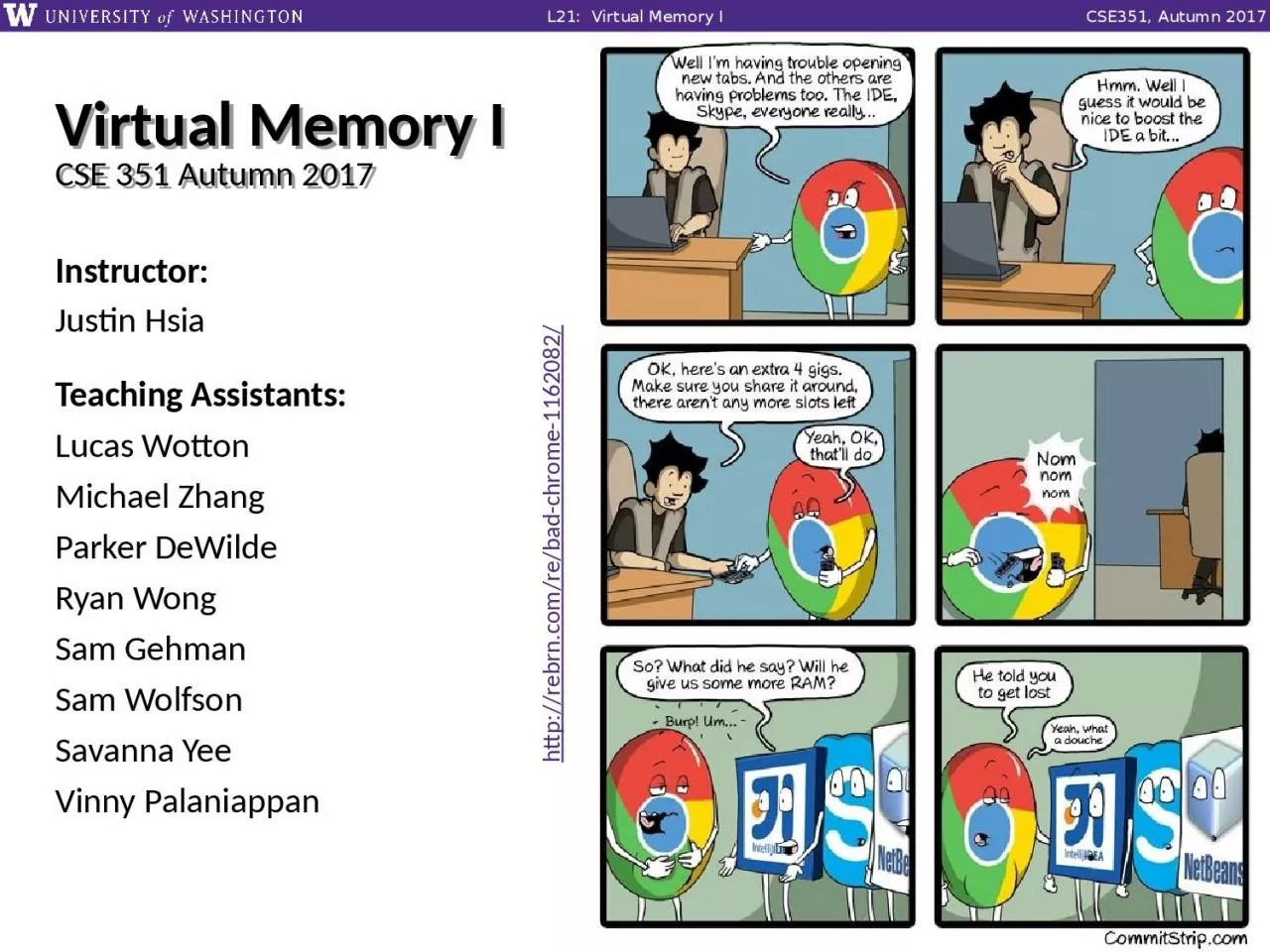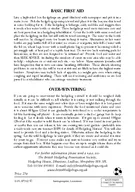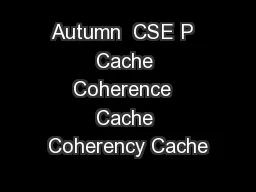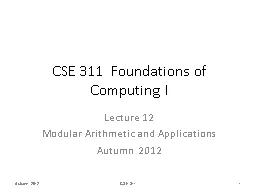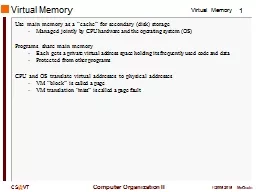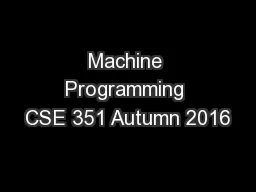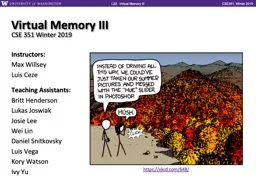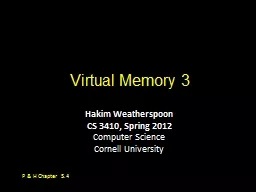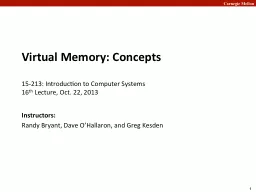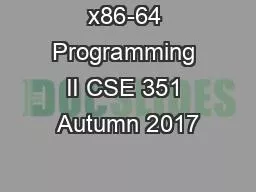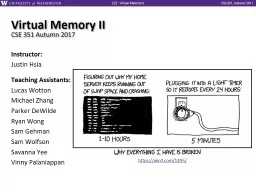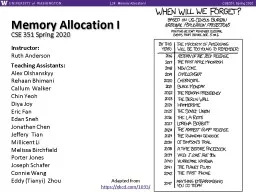PPT-Virtual Memory I CSE 351 Autumn 2017
Author : PeacefulPlace | Published Date : 2022-07-28
Instructor Justin Hsia Teaching Assistants Lucas Wotton Michael Zhang Parker DeWilde Ryan Wong Sam Gehman Sam Wolfson Savanna Yee Vinny Palaniappan httprebrncomrebadchrome1162082
Presentation Embed Code
Download Presentation
Download Presentation The PPT/PDF document "Virtual Memory I CSE 351 Autumn 2017" is the property of its rightful owner. Permission is granted to download and print the materials on this website for personal, non-commercial use only, and to display it on your personal computer provided you do not modify the materials and that you retain all copyright notices contained in the materials. By downloading content from our website, you accept the terms of this agreement.
Virtual Memory I CSE 351 Autumn 2017: Transcript
Download Rules Of Document
"Virtual Memory I CSE 351 Autumn 2017"The content belongs to its owner. You may download and print it for personal use, without modification, and keep all copyright notices. By downloading, you agree to these terms.
Related Documents

